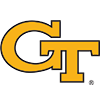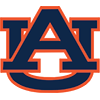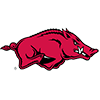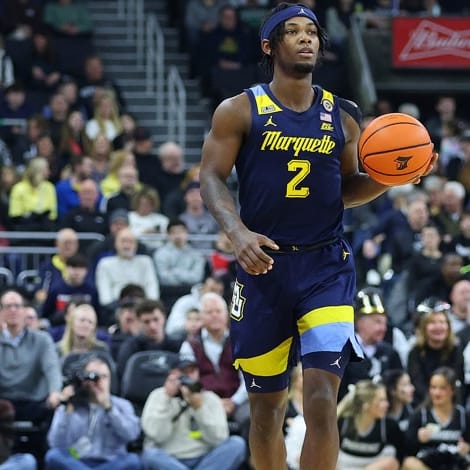On the eve of Selection Sunday, we'll take a look at the bubble teams vying for a spot in the NCAA Tournament. Who's in, who's on the fringe and who's got some work left to do? Of course, all of this is subject to change as the conference tournaments begin in earnest. Beware the dreaded bid stealers. Conference tournament winners that otherwise would have not made the big dance on resume alone will shrink the bubble.
We'll be using a variety of measurements, including conference record, overall record and the good ol' eye test to hash out which teams are worthy and which should be left out in the cold. As a refresher, the NCAA Evaluation Tool (NET) is used, which takes into account a variety of factors, including individual game results, strength of schedule, game location, scoring margin, net offensive and defensive efficiency and the quality of wins and losses. In addition, wins (and losses) are now separated into Quadrants, depending on the caliber of opponent as well as the location of wins. To simplify, Quadrant 1 wins are the most valuable and come against the strongest competition. Baylor currently has the most Quadrant 1 wins with 11. By contrast, Quadrant 4 losses are the worst result, coming against inferior squads. Most teams have wins and losses in at least three quadrants, so it is important to not just look at Quadrant 1 wins, though those are certainly most likely to help a school's cause.
What matters more, big wins or bad losses? Should a sub-.500 conference record automatically preclude your squad from inclusion in the NCAA Tournament? How about a .500-record overall? How important is how a team is playing at the time of Selection Sunday? We'll tackle these queries and more in the Bubble Edition of the College Hoops Barometer.
UPGRADE
 Memphis – The Tigers are rolling heading into the AAC Tournament, having won 10 of their last 11 games. That includes a season-sweep of a top-10 squad in the form of Houston. Memphis has a NET rating of 35, which includes four Quadrant I wins. That high of a NET rating when viewed in the lens of a final field of 68 schools for the NCAA Tournament speaks volumes about the favorable position the Tigers find themselves in at this point. The possible return of Emoni Bates to the fold is also a huge wildcard; the Tigers should make the tourney despite a maddeningly disappointing season from one of the top recruits in the nation. Bates has been nursing a back injury of late. Even without him, though, the Tigers have found their groove and should be among the participants in March Madness.
Memphis – The Tigers are rolling heading into the AAC Tournament, having won 10 of their last 11 games. That includes a season-sweep of a top-10 squad in the form of Houston. Memphis has a NET rating of 35, which includes four Quadrant I wins. That high of a NET rating when viewed in the lens of a final field of 68 schools for the NCAA Tournament speaks volumes about the favorable position the Tigers find themselves in at this point. The possible return of Emoni Bates to the fold is also a huge wildcard; the Tigers should make the tourney despite a maddeningly disappointing season from one of the top recruits in the nation. Bates has been nursing a back injury of late. Even without him, though, the Tigers have found their groove and should be among the participants in March Madness.
 Wake Forest – The ACC has been downgraded significantly this season, and to a certain extent that is warranted. However, the disrespect went a little far when pundits argued for months that a team like Miami was unworthy of an at-large bid. That argument has gone by the wayside as the Canes secured a double bye in the ACC Tournament while winning 22 games overall, including a road victory at Cameron Indoor Arena over Duke. Miami also beat Wake Forest twice, though the comparison of resumes is worthwhile here in any event. Miami has a NET rating of 59, while Wake has a NET rating of 39. Wake has 23 wins overall. However, Miami has four Quadrant I wins as compared to one for the Demon Deacons. That one win was also a road triumph at Duke, though, and Wake still went 13-7 in the conference. Perhaps that conference record does not matter as much in what is viewed as a "watered-down" ACC, but the Demon Deacons still have done enough to warrant inclusion in the big dance. Wake Forest may also get another crack at Miami in the ACC Tournament.
Wake Forest – The ACC has been downgraded significantly this season, and to a certain extent that is warranted. However, the disrespect went a little far when pundits argued for months that a team like Miami was unworthy of an at-large bid. That argument has gone by the wayside as the Canes secured a double bye in the ACC Tournament while winning 22 games overall, including a road victory at Cameron Indoor Arena over Duke. Miami also beat Wake Forest twice, though the comparison of resumes is worthwhile here in any event. Miami has a NET rating of 59, while Wake has a NET rating of 39. Wake has 23 wins overall. However, Miami has four Quadrant I wins as compared to one for the Demon Deacons. That one win was also a road triumph at Duke, though, and Wake still went 13-7 in the conference. Perhaps that conference record does not matter as much in what is viewed as a "watered-down" ACC, but the Demon Deacons still have done enough to warrant inclusion in the big dance. Wake Forest may also get another crack at Miami in the ACC Tournament.
 Wyoming – I'm a big fan of the Mountain West this season, and do not believe the conference has gotten enough publicity. Boise State and Colorado State are legitimately dangerous teams, while San Diego State and the Cowboys of Wyoming are not far behind. All four teams should be included in the final field. The NET rating for the Cowboys is solid at 48 and they have four Quadrant I wins, the same as Boise and SDSU and just one behind CSU. Wyoming's two Quadrant III losses are what yields the slight downgrade as compared to the other three schools, as Colorado State has just one while SDSU and BSU have none. The Cowboys have also scuffled a bit down the stretch, losing four of their final seven regular season contests. Still, they split the season series with Boise and Colorado State and have two of the better players in the country that nobody knows about in Graham Ike and Hunter Maldonado. When the dust settles, it should be determined that the Cowboys have done enough.
Wyoming – I'm a big fan of the Mountain West this season, and do not believe the conference has gotten enough publicity. Boise State and Colorado State are legitimately dangerous teams, while San Diego State and the Cowboys of Wyoming are not far behind. All four teams should be included in the final field. The NET rating for the Cowboys is solid at 48 and they have four Quadrant I wins, the same as Boise and SDSU and just one behind CSU. Wyoming's two Quadrant III losses are what yields the slight downgrade as compared to the other three schools, as Colorado State has just one while SDSU and BSU have none. The Cowboys have also scuffled a bit down the stretch, losing four of their final seven regular season contests. Still, they split the season series with Boise and Colorado State and have two of the better players in the country that nobody knows about in Graham Ike and Hunter Maldonado. When the dust settles, it should be determined that the Cowboys have done enough.
CHECK STATUS
 Rutgers – The Scarlet Knights are likely to be among the more divisive teams for the selection committee this weekend. Playing in arguably the toughest conference in college basketball this season, Rutgers has amassed an impressive six Quadrant I wins. Every other team with at least six Quadrant I victories at the time of this writing appears to be firmly in the big dance. The Scarlet Knights can beat anyone on a given night. Apparently, they can also lose to anyone on a given night as well. Rutgers dropped at least one game to each of the four worst teams in the Big Ten, while also suffering a devastating Quadrant IV loss to the lowly Lafayette Leopards earlier this season. The highest of highs and the lowest of lows make judging Rutgers' resume quite a task. A couple of wins in the Big Ten Tournament would serve the Scarlet Knights extremely well. An early exit, by contrast, will leave their status completely up in the air.
Rutgers – The Scarlet Knights are likely to be among the more divisive teams for the selection committee this weekend. Playing in arguably the toughest conference in college basketball this season, Rutgers has amassed an impressive six Quadrant I wins. Every other team with at least six Quadrant I victories at the time of this writing appears to be firmly in the big dance. The Scarlet Knights can beat anyone on a given night. Apparently, they can also lose to anyone on a given night as well. Rutgers dropped at least one game to each of the four worst teams in the Big Ten, while also suffering a devastating Quadrant IV loss to the lowly Lafayette Leopards earlier this season. The highest of highs and the lowest of lows make judging Rutgers' resume quite a task. A couple of wins in the Big Ten Tournament would serve the Scarlet Knights extremely well. An early exit, by contrast, will leave their status completely up in the air.
 SMU – The Mustangs are about as bubbly as it gets for selection purposes. Their signature win came against Houston earlier this season, and the Mustangs also beat Memphis twice. That's all the Mustangs have in terms of big wins, though, as playing in the American Athletic Conference hurts their strength of schedule. Their NET rating is currently 49. Beating another bubble team in the form of Dayton earlier this season certainly does not hurt SMU, though the non-conference slate is otherwise devoid of any significant wins. In contrast to the resume of teams like Rutgers above and Virginia below, the resume for SMU is fairly tame. The Mustangs largely beat who they should have beaten, lost to who they should have lost to, sprinkled with a couple of minor peaks and valleys. We will see how the committee rewards consistency and arguably mediocrity as opposed to highs and lows in comparing Rutgers, Virginia and SMU. Unless they win their respective conference tournaments, of course.
SMU – The Mustangs are about as bubbly as it gets for selection purposes. Their signature win came against Houston earlier this season, and the Mustangs also beat Memphis twice. That's all the Mustangs have in terms of big wins, though, as playing in the American Athletic Conference hurts their strength of schedule. Their NET rating is currently 49. Beating another bubble team in the form of Dayton earlier this season certainly does not hurt SMU, though the non-conference slate is otherwise devoid of any significant wins. In contrast to the resume of teams like Rutgers above and Virginia below, the resume for SMU is fairly tame. The Mustangs largely beat who they should have beaten, lost to who they should have lost to, sprinkled with a couple of minor peaks and valleys. We will see how the committee rewards consistency and arguably mediocrity as opposed to highs and lows in comparing Rutgers, Virginia and SMU. Unless they win their respective conference tournaments, of course.
 Xavier – In November and December, it would have been laughable to even consider the notion that the Musketeers could be left out of the big dance. Xavier started the season 11-1, including wins over Ohio State, Oklahoma State, Virginia Tech, Cincinnati, and Marquette. Unfortunately, the wheels appear to have fallen off for the Musketeers of late, as Xavier has dropped eight of its last 10 games. However, Xavier did have a win over a ranked UConn squad mixed in, and the Musketeers possess five Quadrant I wins along with a NET rating of 37. However, Xavier is just 8-11 in Big East conference play; as discussed, a sub-.500 conference record is frowned upon. There's a lot to chew on with Xavier's resume; the Musketeers might need one more big win to feel comfortable, and they certainly are not playing their best ball right now.
Xavier – In November and December, it would have been laughable to even consider the notion that the Musketeers could be left out of the big dance. Xavier started the season 11-1, including wins over Ohio State, Oklahoma State, Virginia Tech, Cincinnati, and Marquette. Unfortunately, the wheels appear to have fallen off for the Musketeers of late, as Xavier has dropped eight of its last 10 games. However, Xavier did have a win over a ranked UConn squad mixed in, and the Musketeers possess five Quadrant I wins along with a NET rating of 37. However, Xavier is just 8-11 in Big East conference play; as discussed, a sub-.500 conference record is frowned upon. There's a lot to chew on with Xavier's resume; the Musketeers might need one more big win to feel comfortable, and they certainly are not playing their best ball right now.
DOWNGRADE
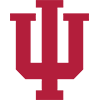 Indiana – On the plus side, Indiana plays in the best conference in college basketball this season. On the downside, Indiana plays in the best conference in college basketball this season. The Hoosiers have a NET rating of 44 but managed just three Quadrant I wins in 10 attempts. Zero Quadrant IV losses and only one Quadrant III loss helps Indiana's cause, though the Hoosiers may simply have not had enough big wins to punch their ticket. A sub-.500 conference record, even in such an ultra-competitive conference, could be the death knell for Indiana's tourney hopes. The bubble may burst if the Hoosiers can't find their way to pull out at least one more big win in the Big Ten Tournament.
Indiana – On the plus side, Indiana plays in the best conference in college basketball this season. On the downside, Indiana plays in the best conference in college basketball this season. The Hoosiers have a NET rating of 44 but managed just three Quadrant I wins in 10 attempts. Zero Quadrant IV losses and only one Quadrant III loss helps Indiana's cause, though the Hoosiers may simply have not had enough big wins to punch their ticket. A sub-.500 conference record, even in such an ultra-competitive conference, could be the death knell for Indiana's tourney hopes. The bubble may burst if the Hoosiers can't find their way to pull out at least one more big win in the Big Ten Tournament.
 Virginia Tech/Virginia – I'm going to lump these two Virginia schools together because as of right now, they appear to be on the outside looking in. However, I am not as down on the ACC this season as some others, and both teams are going to have the chance to improve their resumes this week. The Hokies have fewer bad losses but also fewer big wins. Meanwhile, the Hoos have three Quadrant I wins but four Quadrant III losses, as well as a damaging Quadrant IV loss as well. The saving grace for both schools is that assuming they take care of business in their opening game of the ACC Tournament, each will have a chance at an impressive Quadrant I win in the quarterfinals. I'm not counting either of them out just yet, especially the Hokies with a NET rating of 37.
Virginia Tech/Virginia – I'm going to lump these two Virginia schools together because as of right now, they appear to be on the outside looking in. However, I am not as down on the ACC this season as some others, and both teams are going to have the chance to improve their resumes this week. The Hokies have fewer bad losses but also fewer big wins. Meanwhile, the Hoos have three Quadrant I wins but four Quadrant III losses, as well as a damaging Quadrant IV loss as well. The saving grace for both schools is that assuming they take care of business in their opening game of the ACC Tournament, each will have a chance at an impressive Quadrant I win in the quarterfinals. I'm not counting either of them out just yet, especially the Hokies with a NET rating of 37.
 BYU – The West Coast Conference is usually all about Gonzaga, and while the Bulldogs remain one of the favorites to win the NCAA Tournament, the WCC experienced something of a renaissance this season. Saint Mary's and San Francisco should already be included in the final field, and a case could also be made for Santa Clara as well as the Cougars. BYU is 22-10 overall, 9-6 in conference action. The Cougs have four Quadrant I wins, along with a NET rating of 55. That puts them right on the fringe of inclusion. A bad Quadrant IV loss to Utah Valley of the WAC damages their resume, though. The Cougs attempted to challenge themselves in the non-conference portion of the slate, with wins over Oregon and Utah, though they fell to Creighton and Vanderbilt. BYU got smashed by Gonzaga twice and lost its only matchup with aforementioned Santa Clara. Unfortunately, BYU's resume looks closer to Santa Clara's than San Francisco's, which means at the end of the day on Sunday, the Cougars could be left hung out to dry.
BYU – The West Coast Conference is usually all about Gonzaga, and while the Bulldogs remain one of the favorites to win the NCAA Tournament, the WCC experienced something of a renaissance this season. Saint Mary's and San Francisco should already be included in the final field, and a case could also be made for Santa Clara as well as the Cougars. BYU is 22-10 overall, 9-6 in conference action. The Cougs have four Quadrant I wins, along with a NET rating of 55. That puts them right on the fringe of inclusion. A bad Quadrant IV loss to Utah Valley of the WAC damages their resume, though. The Cougs attempted to challenge themselves in the non-conference portion of the slate, with wins over Oregon and Utah, though they fell to Creighton and Vanderbilt. BYU got smashed by Gonzaga twice and lost its only matchup with aforementioned Santa Clara. Unfortunately, BYU's resume looks closer to Santa Clara's than San Francisco's, which means at the end of the day on Sunday, the Cougars could be left hung out to dry.

























